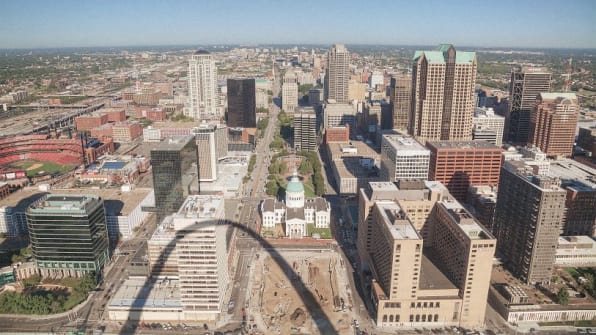The Future of Autonomous Vehicles Relies On Middle America
Americans love their cars. Tens of millions of drivers hit our roads each day from Seattle to Savannah, and everywhere in between. But centers of driving technology innovation remain on the geographical fringes of the country–the coasts. And while there’s autonomous vehicle research and development happening in traditional automotive hubs like Detroit and testing planned for Ohio, much of America’s boundary-pushing progress will happen in places like Boston, Pittsburgh, and Silicon Valley. Sustainable consumer adoption of self-driving cars, however, relies on the massive population that lives in flyover cities.
There’s broad uncertainty and wariness about the value (and necessity) of ridesharing, let alone self-driving cars, in America’s heartland. The diverse, and in some cases sparse, topography between America’s coasts lends itself to mapping confusion: for now, people in landlocked areas need to drive to sustain their various ways of life. There are the key inland roadblocks standing in the way of a nationwide driverless future.

Mapping and logistics
Connecting autonomous cars to mapping data that covers massive geographical areas and updating it with the latest infrastructure developments is the first, and perhaps most complex, step for companies hoping to bring driverless technology to America’s roads. Building an integrated system will also ensure self-driving car manufacturers make good on their promises of safer roads, efficient use of fuel, and better car performance. In addition to working with local groups around the U.S. to test technology, successful mapping will require partnerships and data sharing between public and private sector entities working to bring driverless cars to the roads.
Achieving a level of mapping that covers necessary details of the country’s infrastructure and topography between coasts will prove to be an uphill battle, especially in some of the country’s flattest areas. Concerns and regulation will continuously arise with lawmakers at the city, state, and federal levels. Despite likely complications, private sector innovators will need to work with legislators and their staffs to secure permission to survey roads and impede on daily lives of the citizenry.

Adoption of technology
The widespread adoption of driverless cars requires buy-in from parts of the United States that have yet to embrace ride hailing as an alternative form of transportation. While ridesharing apps like Uber and Lyft are prevalent around the country, there’s still a lack of interest in replacing driving with riding in the cities where these companies operate, let alone areas where they don’t. Uber, Lyft and smaller hailing services, like Curb, are in the process of breaking into smaller markets, but they often need to navigate complicated regulatory environments and understand who new drivers and riders would be before setting up shop. Companies and organizations working to bring autonomous vehicles to America’s roads will need to follow a similar path to market. But I don’t see that happening for at least decade. The reason: Americans, including millennials, simply love their cars and many have no plans to give up car ownership.

Wariness of automation
Many consumers living in flyover cities rely on their ability to drive for work, life and everything in between. Ordinary people, from farmers to heavy machine operators to ambulance drivers, are watching the arc of automation with interest. There are a total of 1.7 million truck drivers in the U.S. and another 1.7 professional taxi, bus and delivery drivers around the country who fear losing their jobs to automation. Most of them qualify as middle class citizens. In order to convince these Americans who drive often–and for a living–that a driverless future is a good thing, delicate consumer education and understanding and proof of safety and affordability needs to happen first. Companies looking to successfully bring self-driving technology to heartland roads need to mirror tactics used in grassroots politics: constant community outreach, persistent relationship building, and consistent giving back to the community in a way that helps locals in one way or another.

The last mile(s)
Technology companies who join the driverless car arms race need to incorporate mainland America early in the autonomous vehicle innovation process in order to illuminate and address local concerns. The Obama Administration already laid the regulatory groundwork for public-private partnerships across the country to address local issues. It will be interesting to see what new U.S. Transportation Secretary Elaine Chao, who has been a vocal proponent of driving innovation (despite news her team is reevaluating Obama-era self-driving regulations), does to advance or revamp the federally-sketched roadmap. Over the next few years, making the case to rural and suburban consumers that self-driving cars improve safety and create new career opportunities will be just as crucial as innovation to speeding up adoption of the technology.
George Arison is the founder and CEO of Shift.
(65)



